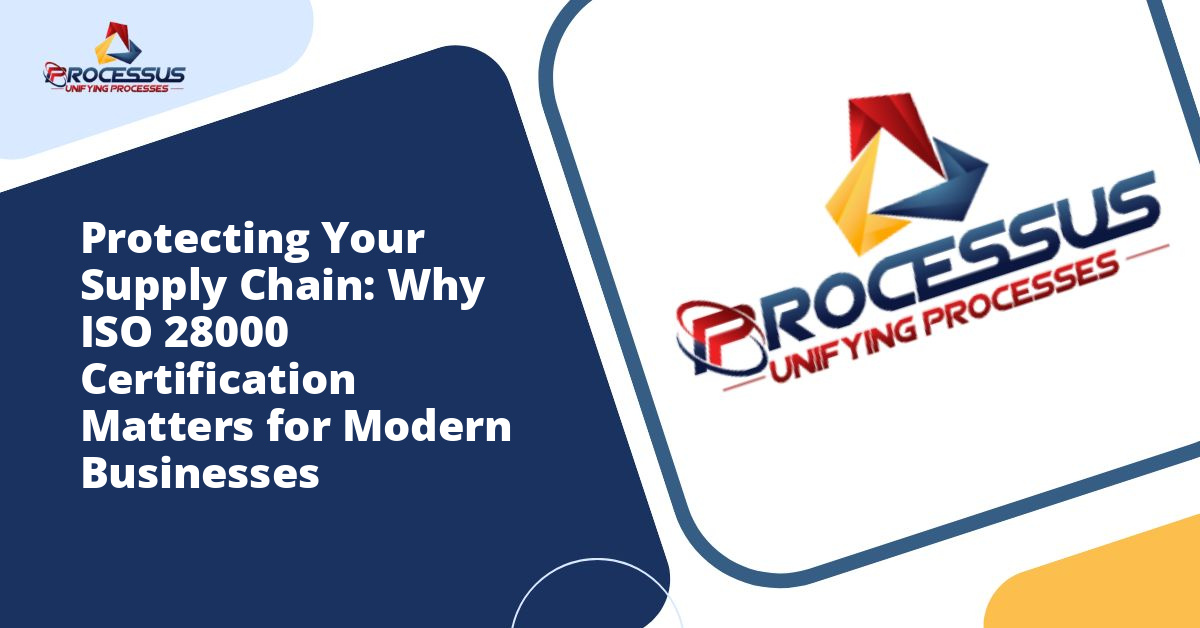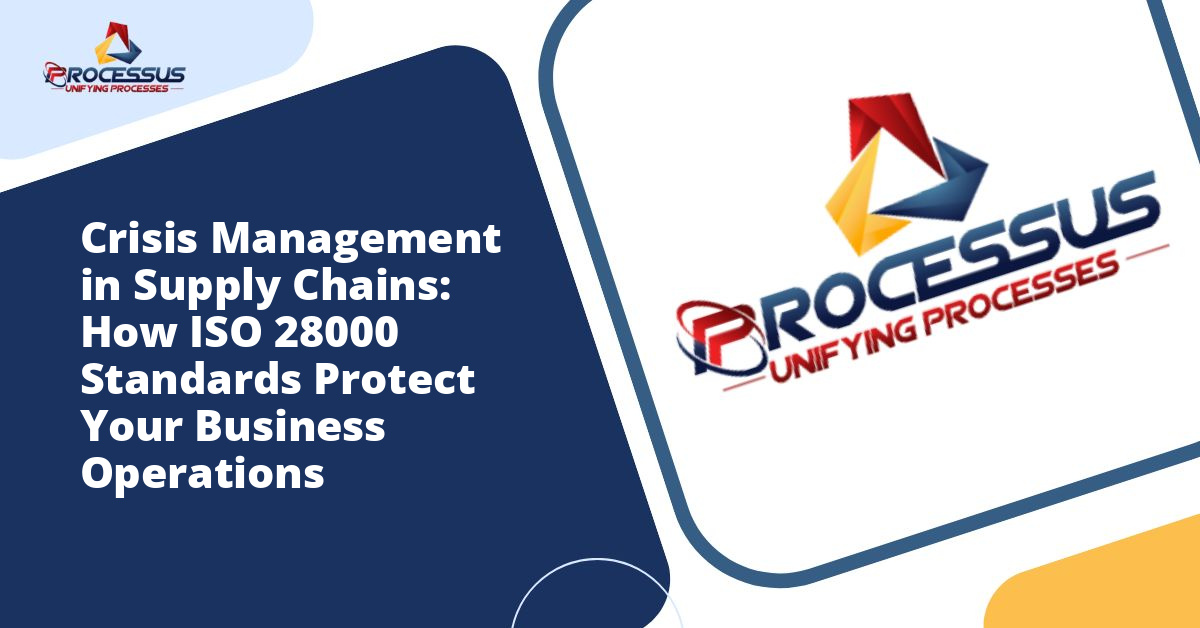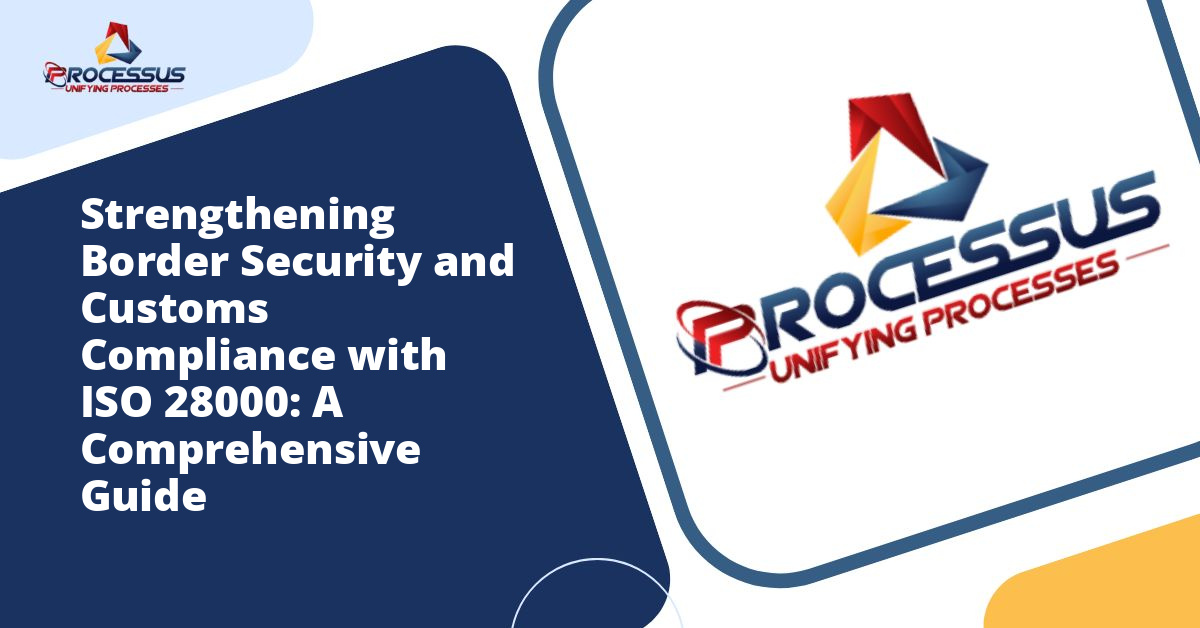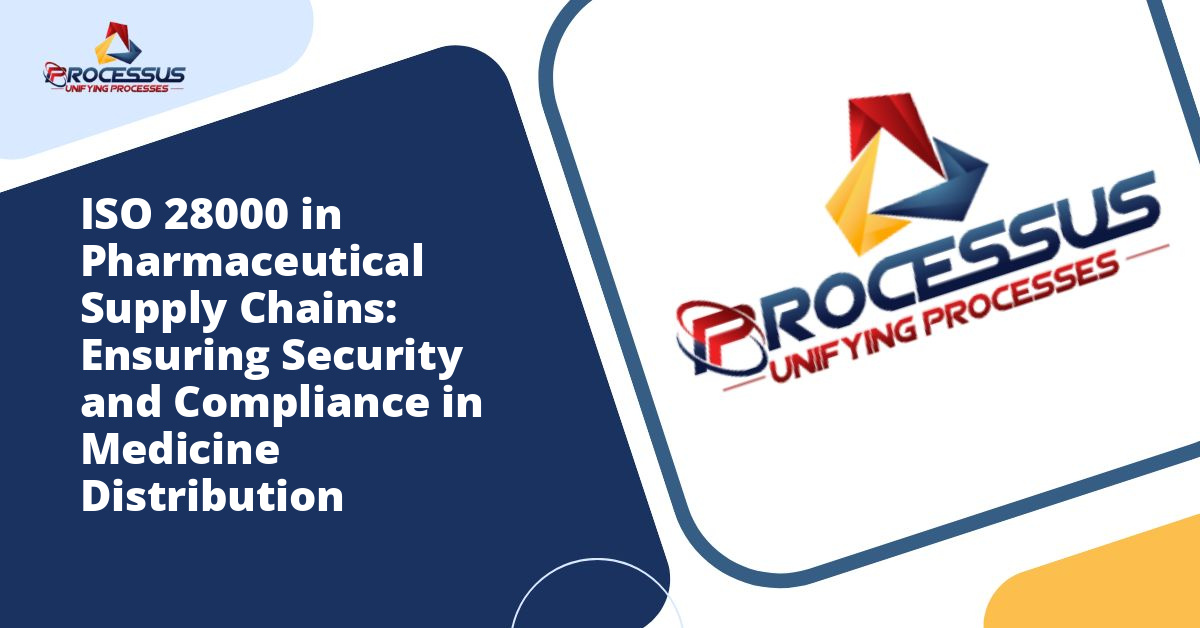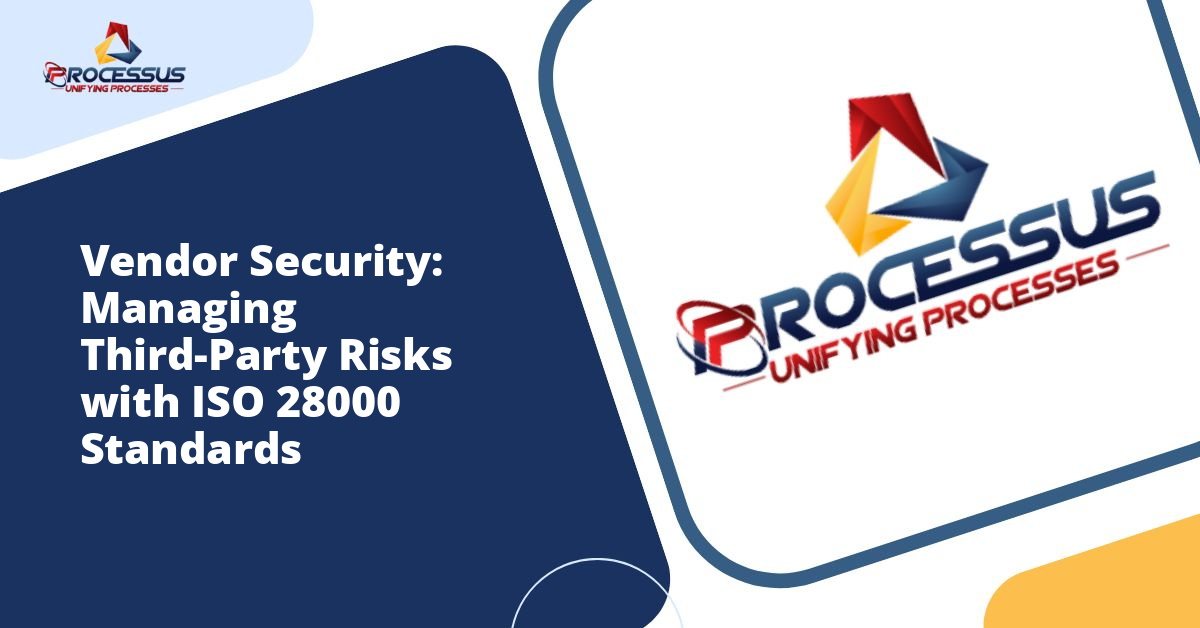In today’s interconnected global marketplace, supply chain security has become one of the most pressing concerns for businesses of all sizes. From manufacturing facilities to retail outlets, every link in the supply chain faces potential threats that could disrupt operations, compromise product integrity, and damage brand reputation. This is where ISO 28000 certification steps in as a comprehensive solution to these challenges.
Supply chain vulnerabilities can emerge from countless sources: theft, terrorism, counterfeiting, natural disasters, and even cyber attacks. The financial impact of such disruptions can be devastating, with companies potentially losing millions in revenue, facing regulatory penalties, and suffering long-term reputational damage. ISO 28000 provides a structured framework that helps organizations identify, assess, and mitigate these risks effectively.
Understanding ISO 28000: The Foundation of Supply Chain Security
ISO 28000 is an international standard that specifies requirements for a security management system in the supply chain. Developed by the International Organization for Standardization, this standard applies to organizations of all sizes and types involved in manufacturing, service, storage, or transportation at any stage of the production or supply process.
The standard takes a holistic approach to supply chain security, recognizing that effective protection requires more than just physical barriers or security personnel. It encompasses risk assessment, security planning, implementation of controls, performance monitoring, and continuous improvement. This comprehensive methodology ensures that security becomes embedded in the organizational culture rather than being treated as an afterthought.
What makes ISO 28000 particularly valuable is its compatibility with other management system standards, including ISO 9001 for quality management and ISO 14001 for environmental management. This compatibility allows organizations to integrate their security management system with existing frameworks, creating operational efficiencies and reducing duplication of effort.
The Growing Importance of Supply Chain Security
The modern supply chain has become increasingly complex, with products often crossing multiple borders and passing through numerous hands before reaching their final destination. This complexity creates multiple points of vulnerability that malicious actors can exploit. Recent years have seen a dramatic increase in supply chain attacks, with criminals becoming more sophisticated in their methods.
Consider the impact of cargo theft alone. Industry reports suggest that cargo theft costs businesses billions of dollars annually worldwide. These thefts can occur at warehouses, during transportation, or at distribution centers. Beyond the immediate financial loss, stolen goods can end up in unauthorized markets, competing with legitimate products and damaging brand value.
Counterfeiting represents another significant threat. Fake products infiltrating the supply chain can lead to serious consequences, particularly in industries such as pharmaceuticals, aerospace, and automotive manufacturing, where counterfeit components could pose safety risks. ISO 28000 helps organizations establish verification processes and security controls that make it much harder for counterfeit goods to enter the supply chain.
The rise of terrorism and organized crime has added another dimension to supply chain security concerns. Containers and shipments could potentially be used to transport illegal goods or even weapons. Governments worldwide have implemented stringent security requirements for supply chains, and organizations that cannot demonstrate adequate security measures may face restrictions on their operations or access to certain markets.
Key Components of ISO 28000 Certification
Risk Assessment and Management
At the heart of ISO 28000 lies a robust risk assessment process. Organizations must identify all potential security threats to their supply chain, evaluate the likelihood and potential impact of each threat, and develop appropriate mitigation strategies. This process requires a thorough understanding of the entire supply chain, including suppliers, logistics providers, and customers.
Risk assessment under ISO 28000 is not a one-time exercise. The standard requires ongoing monitoring and regular review of risks, recognizing that the threat landscape constantly evolves. New technologies, changing geopolitical situations, and emerging criminal tactics all create new risks that organizations must address proactively.
Security Planning and Implementation
Once risks have been identified and assessed, organizations must develop and implement security plans that address these risks appropriately. This includes establishing security objectives, allocating resources, defining responsibilities, and implementing specific security controls. These controls might include physical security measures such as fencing, lighting, and access controls, as well as procedural controls like background checks for personnel and security protocols for handling sensitive materials.
The standard also emphasizes the importance of personnel security. Employees at all levels must understand their role in maintaining supply chain security. This requires comprehensive training programs that educate staff about security threats, procedures, and their individual responsibilities. Regular refresher training ensures that security awareness remains high throughout the organization.
Monitoring and Measurement
ISO 28000 requires organizations to establish processes for monitoring and measuring the performance of their security management system. This includes tracking security incidents, conducting regular audits, and analyzing performance data to identify trends and areas for improvement. Key performance indicators might include the number of security breaches, response times to incidents, and the effectiveness of security controls.
Regular internal audits play a crucial role in maintaining certification. These audits verify that security procedures are being followed correctly and that the security management system continues to function effectively. Audit findings provide valuable insights that drive continuous improvement efforts.
Incident Management and Recovery
Despite best efforts at prevention, security incidents may still occur. ISO 28000 requires organizations to establish procedures for responding to security incidents and recovering from disruptions. This includes having emergency response plans, communication protocols, and business continuity arrangements in place.
Effective incident management requires clear roles and responsibilities, rapid communication channels, and predetermined response procedures. Organizations must be able to assess the situation quickly, implement appropriate countermeasures, and minimize the impact on operations. After an incident, a thorough investigation and analysis help prevent similar occurrences in the future.
Benefits of ISO 28000 Certification
Enhanced Security and Risk Reduction
The most obvious benefit of ISO 28000 certification is improved supply chain security. By implementing the comprehensive security measures required by the standard, organizations significantly reduce their exposure to security threats. This translates directly into reduced losses from theft, counterfeiting, and other security incidents.
The systematic approach to risk management helps organizations identify vulnerabilities they might otherwise have overlooked. Many companies discover during the certification process that their security measures had significant gaps. Addressing these gaps before an incident occurs can prevent potentially catastrophic losses.
Regulatory Compliance and Market Access
Many countries have implemented stringent security requirements for supply chains, particularly for international shipments. ISO 28000 certification helps organizations demonstrate compliance with these requirements, facilitating smoother customs clearance and reducing the risk of regulatory penalties.
In some markets, ISO 28000 certification has become a prerequisite for doing business. Large retailers and manufacturers increasingly require their suppliers to demonstrate robust security management systems. Certification can therefore open doors to new business opportunities and help organizations maintain relationships with existing clients.
Competitive Advantage
In an increasingly security-conscious business environment, ISO 28000 certification provides a significant competitive advantage. It demonstrates to customers, partners, and stakeholders that an organization takes supply chain security seriously and has implemented internationally recognized best practices.
This certification can be a powerful differentiator in competitive bidding situations. When choosing between suppliers, many organizations give preference to those with ISO 28000 certification, recognizing that working with certified partners reduces their own supply chain risks.
Operational Efficiency
While security might seem to add complexity and cost to operations, ISO 28000 certification often leads to improved operational efficiency. The systematic approach to process documentation and standardization eliminates redundancies and streamlines operations. Security measures, when properly designed, can actually speed up processes by reducing the need for reactive problem-solving.
Integration with other management systems creates additional efficiencies. Organizations that already have ISO 9001 or ISO 14001 certification find that adding ISO 28000 requires relatively modest additional effort, as many processes and documentation requirements overlap.
Improved Stakeholder Confidence
Certification provides tangible evidence of an organization’s commitment to supply chain security. This builds confidence among various stakeholders, including customers, investors, insurance companies, and regulatory authorities. Customers feel more secure doing business with certified organizations, knowing their products or services come through secure supply chains.
Insurance companies may offer better terms to certified organizations, recognizing that robust security management reduces the likelihood of claims. Similarly, investors view certification as an indicator of good governance and risk management, which can positively impact company valuation.
The Certification Process
Achieving ISO 28000 certification requires commitment and systematic effort. The process typically begins with a gap analysis, where organizations assess their current security practices against the requirements of the standard. This analysis identifies areas where improvements are needed and helps develop an implementation plan.
Organizations must then develop and document their security management system, including security policies, procedures, and work instructions. This documentation phase requires significant effort but provides lasting value by creating a comprehensive reference for security practices.
Implementation follows documentation, with organizations putting their security procedures into practice. This phase often reveals practical challenges that require adjustments to procedures. Training programs ensure that all personnel understand their roles and responsibilities within the security management system.
Internal audits verify that the security management system operates effectively and complies with ISO 28000 requirements. These audits help identify and correct issues before the formal certification audit. Management review of audit findings and system performance demonstrates leadership commitment to security.
The certification audit itself is conducted by an accredited certification body. The audit typically occurs in two stages. The first stage reviews documentation and readiness for certification, while the second stage involves a detailed examination of the implemented security management system. Successful completion of the audit results in ISO 28000 certification.
Certification is not permanent. Organizations must undergo regular surveillance audits to maintain their certification, typically annually. A full recertification audit occurs every three years. This ongoing verification ensures that the security management system continues to function effectively and adapt to changing circumstances.
Implementing ISO 28000: Best Practices
Secure Leadership Commitment
Successful implementation of ISO 28000 requires strong commitment from senior leadership. Leaders must allocate adequate resources, both financial and human, to the implementation effort. They must also demonstrate their commitment through active participation in security initiatives and by making security a strategic priority.
Leadership commitment influences organizational culture. When employees see that leaders take security seriously, they are more likely to embrace security procedures and contribute to the security management system’s success.
Engage Stakeholders Throughout the Supply Chain
Supply chain security cannot be achieved in isolation. Organizations must engage with suppliers, logistics providers, customers, and other partners to create a secure end-to-end supply chain. This might involve requiring suppliers to implement similar security measures or conducting security audits of partner facilities.
Collaboration and information sharing among supply chain partners enhance overall security. When partners alert each other to emerging threats or security incidents, everyone benefits from increased awareness and can take proactive protective measures.
Leverage Technology
Modern technology offers powerful tools for enhancing supply chain security. Track and trace systems provide real-time visibility of goods in transit, making it easier to detect diversions or delays that might indicate security incidents. Access control systems, surveillance cameras, and intrusion detection systems strengthen physical security.
Cybersecurity measures are equally important, as digital systems increasingly control supply chain operations. Protecting these systems from cyber attacks prevents disruptions and protects sensitive information. Blockchain technology is emerging as a tool for enhancing supply chain transparency and preventing counterfeiting.
Foster a Security-Aware Culture
Technology and procedures alone cannot ensure supply chain security. Organizations must cultivate a culture where every employee understands their role in maintaining security and feels empowered to report concerns. Regular training, clear communication, and recognition of security-conscious behavior all contribute to this culture.
Security awareness campaigns keep security top of mind. These might include posters, newsletters, or regular briefings about current threats and security best practices. Making security a regular topic in team meetings reinforces its importance.
Looking Ahead: The Future of Supply Chain Security
Supply chain security challenges will continue to evolve as technology advances and global trade patterns shift. Emerging threats such as drone-based attacks, sophisticated cyber intrusions, and climate-related disruptions will require ongoing adaptation of security measures.
ISO 28000 itself evolves to address these changing needs. The standard undergoes periodic review and revision to incorporate new security challenges and best practices. Organizations with robust security management systems will be well-positioned to adapt to these changes.
The increasing emphasis on supply chain transparency and sustainability creates new intersections with security. Consumers and regulators increasingly demand visibility into supply chains, both for ethical reasons and to combat counterfeiting and fraud. ISO 28000 certification supports these transparency initiatives by ensuring that secure, verifiable processes govern supply chain operations.
Artificial intelligence and machine learning will play growing roles in supply chain security. These technologies can analyze vast amounts of data to detect patterns that might indicate security threats, predict potential vulnerabilities, and optimize security resource allocation. Organizations that combine ISO 28000’s systematic approach with advanced technologies will achieve the highest levels of supply chain security.
Conclusion
ISO 28000 certification represents far more than a badge to display on company websites or marketing materials. It embodies a comprehensive approach to managing supply chain security risks that protects organizations from financial losses, operational disruptions, and reputational damage. In an era where supply chains face unprecedented threats, certification provides a structured framework for building resilience and maintaining stakeholder confidence.
The investment required to achieve and maintain ISO 28000 certification pays dividends through reduced security incidents, improved operational efficiency, enhanced market access, and competitive advantage. Organizations that view security as a strategic priority rather than a cost center position themselves for long-term success in increasingly complex global markets.
As supply chains continue to evolve and new security challenges emerge, the principles embodied in ISO 28000 will remain relevant. The standard’s emphasis on risk-based thinking, continuous improvement, and stakeholder engagement provides a foundation that adapts to changing circumstances while maintaining robust security protections.
For organizations serious about protecting their supply chains and building sustainable competitive advantages, ISO 28000 certification is not merely an option but an essential investment in their future. The question is not whether to pursue certification, but how quickly an organization can implement this critical standard and begin reaping its substantial benefits.

